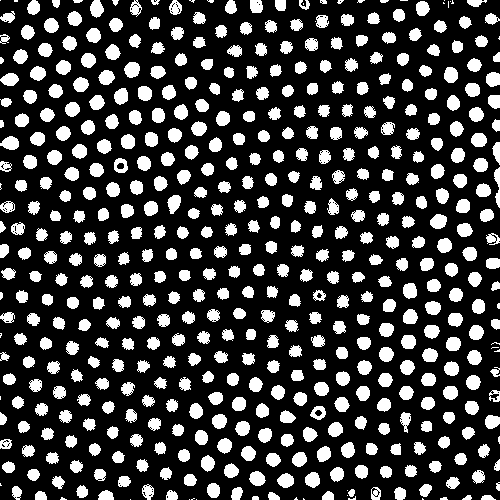Compound Cellular Automata
Previously, I described the Compound Automata. Here, I decided to show a bit more of the pattern finding workflow.
In this example, I will start with some arbitrary rule, , with being some parameters. Then, I will combine several instances of with different parameters into more complex rules.
Density
Density, the fraction of “alive” cells is a very important parameter to decide which patterns will be combined together into a more complicated rule.
Below, the outputs of my rule with different parameters, resulting in different densities.

In general, the first step for me to generate a large collection of parameters with different densities, to later combine them.
First level combination
Now, lets take a larger neighborhood. The largest neighborhood used in has range , so for , the next rule, I will use a neighborhood with range . Lets call this neighborhood .
Our first compound rule, , will be defined like this:
- if , we apply , our base rule with some parameters
- if , we apply , our base rule with some parameters , different from
- else, nothing changes.
For this first example, I will take the following two paramsets.
with density 0.64:

with density 0.24:

There are several values of and that will work. Lower values will lead to dominance of the low density pattern. In the animation below, I set , and then slowly increased the values of . You can observe how we start with low density pattern, then the high density pattern slowly emerges and then dominates it.